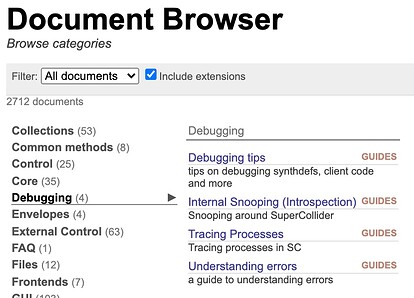Dear all
I just learnt about SynthDescLib - I wonder: can anyone share a resource to learn about such magic? I’m interested in a sort of tutorial to show how to troubleshoot the tree (cmd.shift.T helps here) and ideally the order/structure of the inard of a synth (I try to be clever and use a lot of multichannel expension so I find my mistake (and fun) by ear but I was hoping for a more systematic poking)
I don’t remembering the fantastic tutorials by @elifieldsteel or the essential book by @vanderaalle covering this topic - they were the resources that finally got me to move to SC, but (eternal) intermediate SC with imcomplete knowhow is what I am, and any intermediate method of troubleshooting and poking are welcome. I’m relying way too much on poll ![]()
thanks
p
